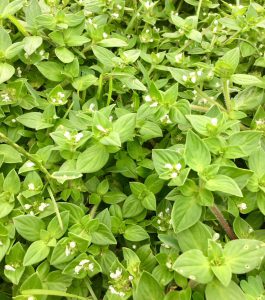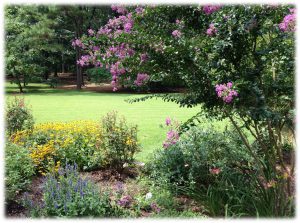If weeds were a major concern in your lawn last summer, the coming weeks are the time to apply a preemergence herbicide to prevent their emergence again this year.
Timing of a preemergence herbicide application for summer annual weeds such as crabgrass should be during mid-February to very early March when day temperatures reach 65° to 70°F for four to five consecutive days. This generally coincides with when azaleas and dogwoods first begin to bloom. For season-long weed control, a second application may be needed about six to nine weeks after the initial application, based on the product’s label instructions.

Common summer annual weeds include crabgrass, Florida pusley, sandspur, old world diamond-flower and spurge. There are many others. Summer annual weeds germinate from seeds in spring, produce flowers followed by seeds and then are killed by cold weather in fall or early winter.
If your lawn has a history of summer annual weeds, one control option is to apply a preemergence herbicide. Timing is critical in order for preemergence herbicides to work.
Some lawn preemergence herbicides to look for include products that contain oryzalin, benefin, pendimethalin, DCPA and bensulide. This is not a complete list.
Overuse of some types of preemergence herbicides can cause your lawn grass to produce short stubby, weak roots. Only use preemergence herbicides on lawns that have been established for at least one year. These products can severely injure newly planted lawns. Because many preemergence products may interfere with lawn grass seed germination, delay reseeding six to sixteen weeks after application.
It is the user’s responsibility to read and follow all label directions and precautions when using any pesticide, including herbicides.

Many people fertilize their North Florida lawns too early. Potentially, this results in lawn problems, waste of fertilizer and waste of money.
It is best to wait until your lawn is completely green before fertilizing, even if that’s not until April or May.
Our lawns begin to green and resume growth as a result of the longer day length and warmer temperatures of spring. Warmer night temperatures are particularly important.
Fertilizing before the soil temperature is adequately warm results in waste of fertilizer and possible lawn injury.
In order for our warm season grasses, such as centipede, St. Augustine and zoysia, to efficiently use fertilizer, consistently warmer nights are required. The best indication that this has happened is when your lawn is completely green. That’s the time to fertilize.
More information on lawn weed control and lawn management for Florida is available from the UF/IFAS Extension Office in your county or online through these links: https://edis.ifas.ufl.edu/publication/ep575, https://hort.ifas.ufl.edu/yourfloridalawn.
 0
0
